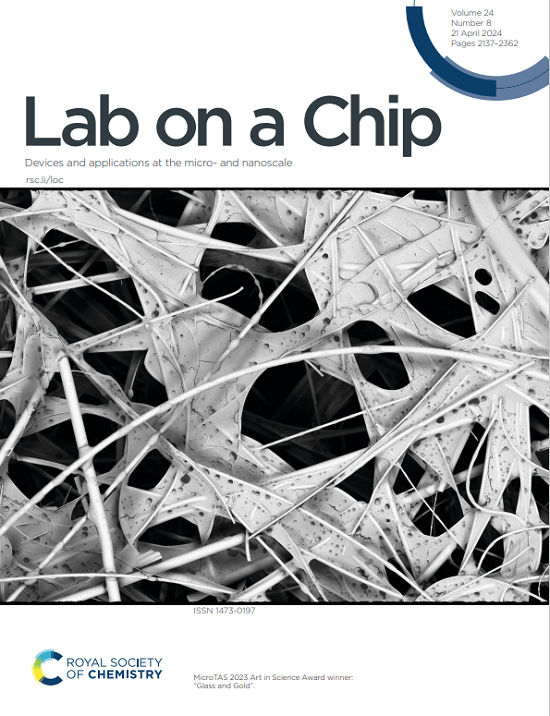A microfluidic system for the cultivation of cyanobacteria with precise light intensity and CO2 control: Enabling growth data acquisition at single-cell resolution.
IF 6.1
2区 工程技术
Q1 BIOCHEMICAL RESEARCH METHODS
引用次数: 0
Abstract
Quantification of cell growth is central to any study of photoautotrophic microorganisms. However, cellular self-shading and limited CO2 control in conventional photobioreactors lead to heterogeneous conditions that obscure distinct correlations between the environment and cellular physiology. Here we present a microfluidic cultivation platform that enables precise analysis of cyanobacterial growth with spatio-temporal resolution. Since cyanobacteria are cultivated in monolayers, cellular self-shading does not occur, allowing homogeneous illumination and precise knowledge of the photonflux density at single-cell resolution. A single chip contains multiple channels, each connected to several hundred growth chambers. In combination with an externally applied light gradient, this setup enables high-throughput multi-parameter analysis in short time. In addition, the multilayered microfluidic design allows continuous perfusion of defined gas mixtures. Transversal CO2 diffusion across the intermediate polydimethylsiloxane membrane results in homogeneous CO2 supply, with a unique exchange-surface to cultivation-volume ratio. Three cyanobacterial model strains were examined under various, static and dynamic environmental conditions. Phase-contrast and chlorophyllfluorescence images were recorded by automated time-lapse microscopy. Deep-learning trained cell segmentation was used to efficiently analyse large image stacks, thereby generating statistically reliable data. Cell division was highly synchronized, and growth was robust under continuous illumination but stopped rapidly upon initiating dark phases. CO2-limitation, often a limiting factor in photobioreactors, was only observed when the device was operated under reduced CO2 between 50 and 0 ppm. Here we provide comprehensive and precise data on cyanobacterial growth at single-cell resolution, accessible for further growth studies and modeling.用于培养蓝藻的微流体系统,可精确控制光照强度和二氧化碳浓度:以单细胞分辨率获取生长数据。
细胞生长的定量化是任何光自养微生物研究的核心。然而,在传统的光生物反应器中,细胞自遮光和有限的二氧化碳控制会导致条件不均,从而掩盖了环境与细胞生理之间的明显相关性。在这里,我们介绍了一种微流控培养平台,该平台能以时空分辨率对蓝藻的生长进行精确分析。由于蓝藻是单层培养的,因此不会出现细胞自遮光现象,从而实现了均匀光照,并能以单细胞分辨率精确了解光通量密度。单个芯片包含多个通道,每个通道连接数百个生长室。结合外部施加的光梯度,该装置可在短时间内进行高通量多参数分析。此外,多层微流体设计还允许连续灌注确定的混合气体。二氧化碳在中间聚二甲基硅氧烷膜上的横向扩散可实现均匀的二氧化碳供应,并具有独特的交换面与培养体积比。在各种静态和动态环境条件下,对三种蓝藻模式菌株进行了研究。通过自动延时显微镜记录了相位对比和叶绿素荧光图像。利用经过深度学习训练的细胞分割技术有效地分析了大量图像堆栈,从而生成了统计上可靠的数据。细胞分裂高度同步,在持续光照下生长旺盛,但在黑暗阶段开始时生长会迅速停止。二氧化碳限制通常是光生物反应器中的一个限制因素,但只有在二氧化碳浓度降低到 50 至 0 ppm 时才会观察到这一限制。我们在此提供了单细胞分辨率下蓝藻生长的全面而精确的数据,可用于进一步的生长研究和建模。
本文章由计算机程序翻译,如有差异,请以英文原文为准。
求助全文
约1分钟内获得全文
求助全文
来源期刊

Lab on a Chip
工程技术-化学综合
CiteScore
11.10
自引率
8.20%
发文量
434
审稿时长
2.6 months
期刊介绍:
Lab on a Chip is the premiere journal that publishes cutting-edge research in the field of miniaturization. By their very nature, microfluidic/nanofluidic/miniaturized systems are at the intersection of disciplines, spanning fundamental research to high-end application, which is reflected by the broad readership of the journal. Lab on a Chip publishes two types of papers on original research: full-length research papers and communications. Papers should demonstrate innovations, which can come from technical advancements or applications addressing pressing needs in globally important areas. The journal also publishes Comments, Reviews, and Perspectives.
 求助内容:
求助内容: 应助结果提醒方式:
应助结果提醒方式:


